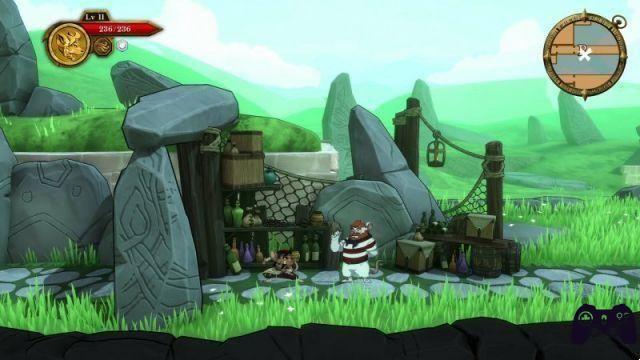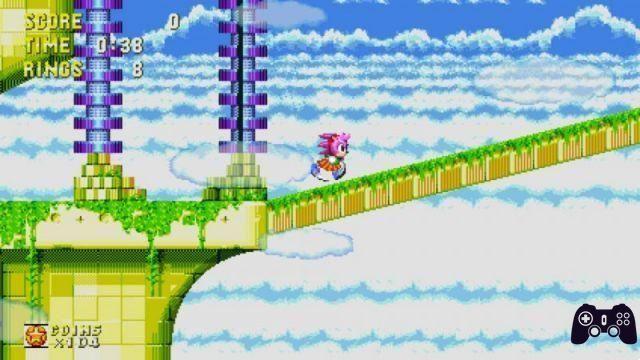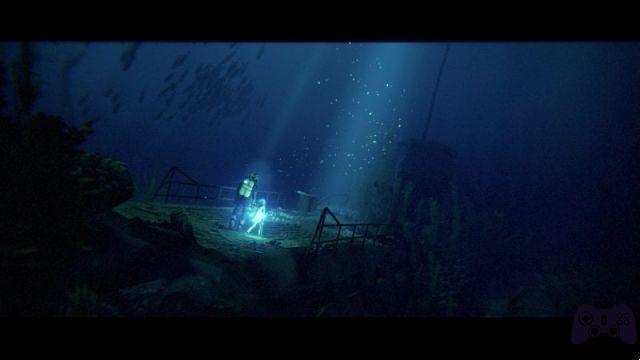It's now well-established practice to wonder if there was "a need" for a new Persona spin-off every time one comes out, only to then inevitably realize that, no, maybe there wasn't a need, but ultimately it was a good thing that Atlus has once again squeezed its golden goose. Persona 5 thus becomes a turn-based strategy game for the occasion, changing its look and landing on practically all platforms. In fact, it is not the first time that Phantom Thieves changes genre: we go from the rhythm game Dancing in the Starlight to the action RPG Strikers via the dungeon crawler Persona Q2.
It therefore remains to be understood how inspired this new iteration is and whether Atlus' P-Studio has managed to build a turn-based strategy worthy of the name on the gameplay and characters that we now know well: it is precisely the crux that our Persona 5 Tactics review We will try to untie it to help you understand if this time you are also at risk of having your heart stolen.
Chat in the Metaverse

We assume that To understand Persona 5 Tactica you should have played at least Persona 5 but not necessarily the Royal version: although there is DLC available at launch that adds Kasumi Yoshizawa and the masked swordsman Crow as playable characters, it is best not to reveal their real name to anyone who has not yet completed the original JRPG! - It seems that Atlus considers that the narrative of Persona 5 Royal is also out of canon this time, as already happened with Persona 5 Strikers.
The story told in Persona 5 Tactica does not have a precise temporal location, but even if the game tries its best to explain the characters and their powers in a few lines In a concise glossary, it is absolutely advisable to approach the strategic with general knowledge that allows you to understand not only the absurd context, but also the relationships between the protagonists that the script takes for granted in the dialogues and cinematics.
As usually happens in Personas, and particularly in the spin-offs, the textual component has a strong relevance, but so much so that The narrative could be assigned to the visual novel genre.. If we exclude the various 3D or cartoon cinematics, most of the story is expressed through long, very long dialogues between the static illustrations that represent the different characters.
The lyrics have been translated into Spanish. and you can choose between English or Japanese dubbing, although not all the dialogues have been spoken; In addition, it is possible to automate the scrolling of the texts, speed it up or skip it completely, but also open a kind of log, in case some lines are lost along the way. These are very convenient features given that the characters in Persona 5 Tactica speak easily: the script is very detailed as always, in some cases even too much. Although it is a typical feature of the series, Tactica goes a little further, forcing the narrative into many contents.

Speak's long skits, for example, serve to better outline characters and situations, often resulting in funny jokes, and reward the player with useful points to unlock skills. The characters talk a lot even before and after the totally optional secondary missions, however the choices that we can make with some frequency only serve to slightly change the reactions to our interventions and have no impact on the narrative or the relationship that our protagonist . His counterpart, Joker, has several characters.
The cast is abundant from the first lines of the game, although the first missions are faced only with Morgana and the new entry Erina: it is the latter who rescues the Phantom Thieves, who have fallen into a strange corner of the Metaverse while they are in the Le bar Blanc. Erina leads a rebellion force against the despotic Marie., who rules with an iron fist a dimension reminiscent of revolutionary France, and who at the beginning of the game manages to hypnotize the other Phantom Thieves.

This is a narrative trick that serves to gradually introduce us to the new gameplay, while Let's rebuild the Phantom Thieves team in a few missions tutorials. Marie's kingdom is not even the only one that constitutes this strange Metaverse in which not only Erina and the friendly Shadows that follow her are trapped, but also the future Prime Minister of Japan, Toshiro Kasukabe, who just in case has also lost his memory.
The mystery of Tactica's Metaverse is in a way the fulcrum of a predictable overarching plot, centered on new characters, who fortunately are characterized with care and above. It's not as memorable a story as the original Persona 5, which communicated important messages between many lines of text, but it is intriguing enough to push the player to continue the main narrative... even at the cost of skipping some dialogue when Lo they make, excessively verbose.
tactical combat

of course The combat system has changed compared to Persona 5 (Royal) with a linear structure that transforms the campaign into a long series of main missions interspersed with narrative (the dialogues mentioned above and possible cinematics) and a management phase in which the player, through the Meeting screens, can customize the Phantom Thieves.
If equipment is reduced to a mere replacement for firearms, which can be purchased or crafted in the advanced stages of the adventure, the organization of active and passive skills seems much more stratified, since it depends on Individual skill trees for the different characters.. The scheme remains conceptually identical from Thief to Thief, with the left side dedicated to signature spells and the right side focused on passive bonuses, but each character has unique and distinctive quirks.

Joker, for example, can develop the Despair-type spells from the Eiha branch, choosing whether to upgrade single-target or area-effect spells, or both, and unlock a special ability at the end of the tree, while Yusuke, in Instead, it has access to Despair type spells from the Eiha branch. Ice type spells from the Eiha branch. Bufu branch. Each Phantom Thief specializes in a certain type of magic., but two things must be taken into account: first, nothing prevents you from expanding your repertoire with Sub-Personae; Secondly, this time it is actually not the weakness to a certain type of magic that determines the mechanical characteristic of Anchor 1.
The skill tree, however, gives a good margin for customization, especially in the early hours of the game when Growth Points are scarce and you have to decide how to spend them. Fortunately it is possible to reset each purchased skill, restoring spent points to reallocate them as many times as you want: this way you can try different solutions, perhaps developing a certain branch as much as you can instead of another.

Each character is then marked with a specific tag that represents the passive bonus they give to the entire team as long as they are an active part of it. Makoto, for example, increases melee damage, while Ryuji increases the trio's HP, Ann increases SP, etc.: in combat, in fact, we can deploy a maximum of three characters, but The Relay mechanic allows us to replace any Phantom Thief that is out of play with another on the bench, taking into account that the number of possible relays is limited by the level of difficulty selected among the five available.
The Phantom Thieves are diversified enough in terms of characteristics and potential to push the player to deploy them all, also because those on the bench get a temporary bonus in later missions, but On some maps, it's the status mods that really make the difference. such as Hypnosis, Whirlwind or Sweep that manipulate the position of enemies, not to mention spectacular unique abilities that take advantage of the special crashed tension gauge and can turn the tide of battle.

However, practically all of Persona 5 Tactica's gameplay is based on positioning, centered on a cover system reminiscent of Mario + Rabbids and which can initially seem a bit chaotic, especially in the tutorial missions that are completed without giving too much attention. weight to the strategy. . Afterwards it becomes very important to carefully calculate each movement, and this applies especially to the side quests, which are often real logic puzzles where each Anchor 1 must be exploited precisely.
The idea is that uncovered units, that is, those that are not adjacent to cover and therefore without an imaginary shield that mitigates or completely nullifies attacks coming from a certain direction, are vulnerable to melee attacks or shots: in that case, the impacted unit ends up upside down and Whoever landed the hit wins a turn through the Anchor 1 system..

The strategic element is basically there, especially on verticalized maps where chained attacks can also be taken advantage of to increase the damage dealt and link multiple Anchor 1s. The Phantom Thief who has won a turn, in fact, does not necessarily have to act immediately. , but it is possible to move another unit between one Anchor 1 and another, perhaps gaining more additional turns. If at least one enemy is down, You can launch the usual assault by forming a triangle with the thieves around at least the downed enemy., but damaging all targets caught in the middle with the area attack called Triple Threat.
In essence, playing Persona 5 Tactica means alternating the movements and actions of the Phantom Thieves during their turn to expel enemies, hitting them when they are discovered to sound the Anchor 1s and closing the mission as quickly and creatively as possible. . Because of this the objectives are quite diversified- Sometimes we will have to eliminate all opponents, other times we will have to reach a goal or balance an object that must be placed in the correct square.

The side quests and boss fights are more inventive and require a good examination of the battlefield, but sometimes it's difficult to understand how the designers wanted us to complete the more perplexing challenges without trying again and again, and in these circumstances you run the risk. risk of playing meaninglessly. for several minutes, only to start again in Game Over. In this sense, perhaps we would have liked a battle "rewind" system In the vein of Fire Emblem Engage and Tactics Ogre Reborn: having to restart longer missions from the beginning, especially ones where your turns are limited, can be quite frustrating.
You can replay all the missions, of course, but the story missions have added value in the form of praise. Each mission offers three optional challenges that reward the player. with a variable number of Personae: this is the only way to unlock the "materials" for the Fusions, which obviously return with great fanfare in the Velvet Room, but with a small twist.

In Persona 5 Tactics, in fact, Every Phantom Thief, not just Joker, can equip a Sub Persona. The dynamics are more or less the same as the original game; Each Persona confers a different number of bonuses to the character's parameters - so it would be advisable to choose Personae wisely - and one or more active or passive abilities, innate or inherited through Fusion which, according to tradition, combines two or more Personae in the inventory or in the Compendium. Subpersons modify characters, granting them extra abilities such as synergistic passives or healing, attacking or buffing spells, but the level of complexity does not come close to that found in the main JRPGs of the series.
It's a choice that makes sense, because Persona 5 Tactica, despite significantly raising the difficulty bar in the approximately thirty hours that are necessary to complete the main campaign, is a fairly intuitive strategy game aimed at a not particularly experienced audience.

This choice also follows from the artistic style with which the characters were represented, deformed compared to the realistic proportions of the other games: Atlus preferred a very cartoonish design, in which the arms and legs stand out, elongated according to the artist's advice. . Hanako Oribe to give greater dynamism to the combat. An effective choice that conveys a compelling visual push in the snappy, snappy animations, which blend perfectly with the music and songs of Toshiki Konishi, full of liveliness and always compelling. The Nintendo Switch version of Persona 5 Tactica that we played performed very well both in the Dock and in portability: the image is clean and bright, especially on the console's OLED screen, and we did not encounter any particular problems, apart from a length considerable. in mission loads.
Perhaps we would have preferred a greater variety of maps and enemies, which in the end only change aesthetically from one kingdom to another but in general do the same and are divided into a limited number of categories that in the long run reveal a certain repetitiveness. Fortunately Persona 5 Tactica is not one of those strategies that tend to exhaust the player's patience. with missions that are longer than demanding: a commitment that works and shows how P-Studio has done its homework in this regard as well.
Conclusions
Tested version Nintendo Switch digital delivery Nintendo eShop Price 59,99 € Holygamerz.com 8.0 Readers (21) 7.3 your voteThe turn-based strategy genre has never been particularly bloated, so we welcome with open arms the experiment of a company like Atlus that, when it comes to Persona, rarely fails. And in fact, Tactica is one of its best spin-offs, repackaging the JRPG series' historical features with a creative twist on both gameplay and appearance. A certain naivety prevents it from approaching the great classics of the past, but in the same way it is clear that Persona 5 Tactica was also designed for those who do not particularly know this genre and only have a great affection for the picturesque Phantom Thieves.
PRO
- A spin-off that successfully pays tribute to the reference series
- Intuitive gameplay that also provides satisfying depth.
- The cartoon style is captivating and the music is as compelling as ever.
AGAINST
- Excessively wordy dialogues that end up boring
- Repeating the strangest missions over and over can be frustrating
- The Joker's Choices Don't Really Affect the Narrative






